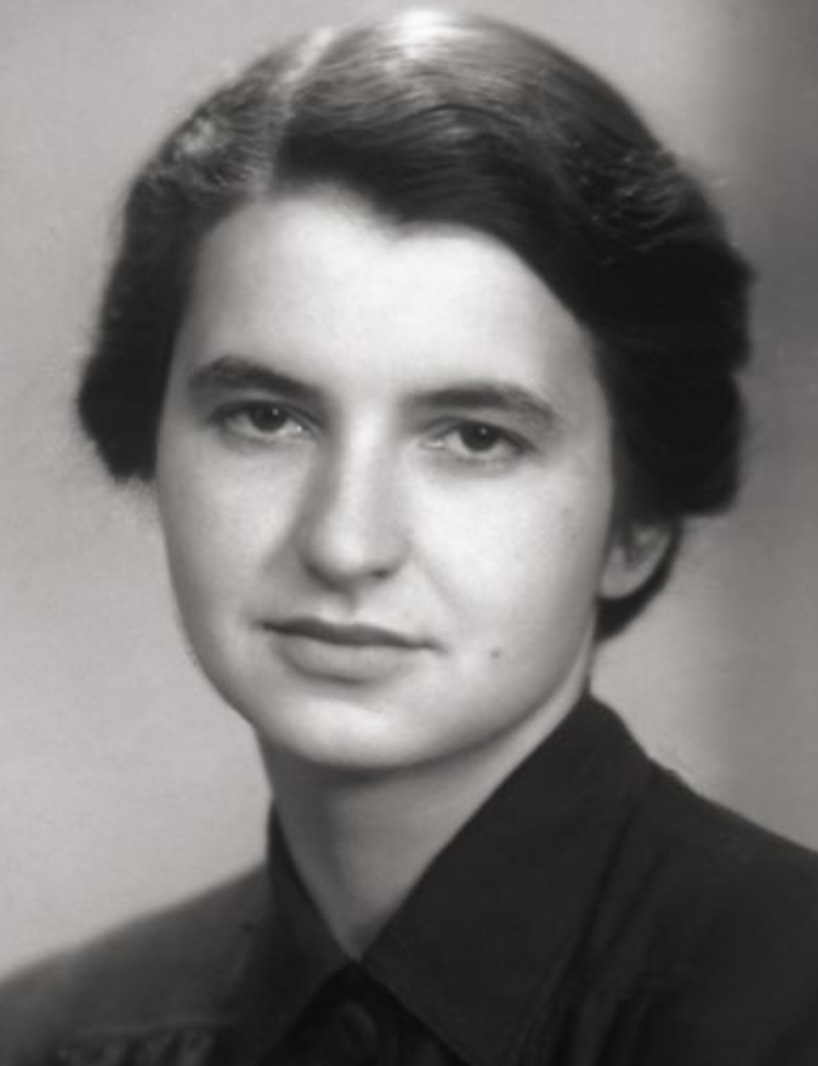On this date in 1920, chemist and freethinker Rosalind Elsie Franklin was born in London to Jewish parents Ellis and Muriel (Waley) Franklin. Before dying in her 30s of ovarian cancer, she made significant contributions to the understanding of DNA and RNA, contributions which were only recognized by the scientific community after her death. “We were a family which debated things,” her younger sister, Jenifer Glynn, said in an interview with BBC News. (Sept. 12, 2015) “So Rosalind grew up with a love of argument. My mother said that when my sister was told something, even when she was very young, she wanted proof. It’s a scientific trait.”
After earning advanced degrees in physical chemistry, she became a research associate at King’s College London in 1951 and worked on X-ray diffraction studies, which would eventually facilitate the double helix theory of DNA. It was her famous “Photograph 51” that finally revealed DNA’s helical structure to James Watson and Francis Crick in 1953. They, along with Franklin’s colleague Maurice Wilkins, shared the Nobel Prize in Physiology or Medicine in 1962, four years after her death.
Crick and Watson failed to mention her in their acceptance speeches, even though Crick had written to Jacques Monod that “the data which really helped us to obtain the structure was mainly obtained by Rosalind Franklin,” according to a 2012 account by Glynn in The Lancet. Wilkins made a brief reference to her “very valuable” contribution.
Franklin made respected contributions to the study of coal, carbon, graphite and viruses and published nearly 50 scientific papers, a remarkable achievement for a woman of her era who lived only 37 years. She is the namesake of Rosalind Franklin University of Medicine and Science, a graduate school in North Chicago, Ill., and the British Royal Society’s Rosalind Franklin Award, presented annually for outstanding work in science, technology, engineering or mathematics.
“Photograph 51” by American playwright Anna Ziegler opened in London in September 2015 and continues to be presented in theaters around the world. Nicole Kidman played Franklin in the London production. A Mars rover named the Rosalind Franklin is scheduled to be launched in 2020 by the European and Russian space agencies. The name was chosen by a British panel from almost 36,000 suggestions. (D. 1958)
PHOTO: National Portrait Gallery, London


